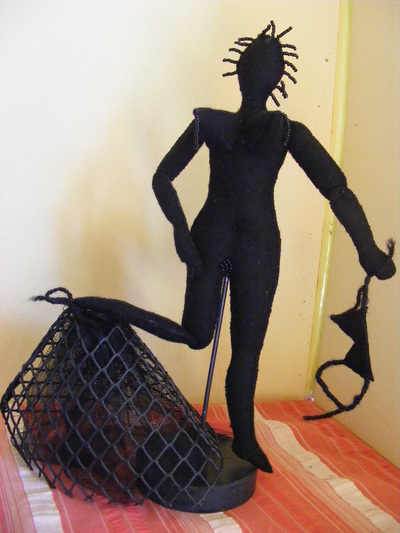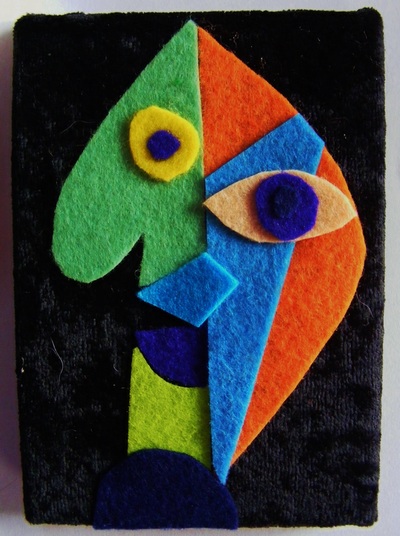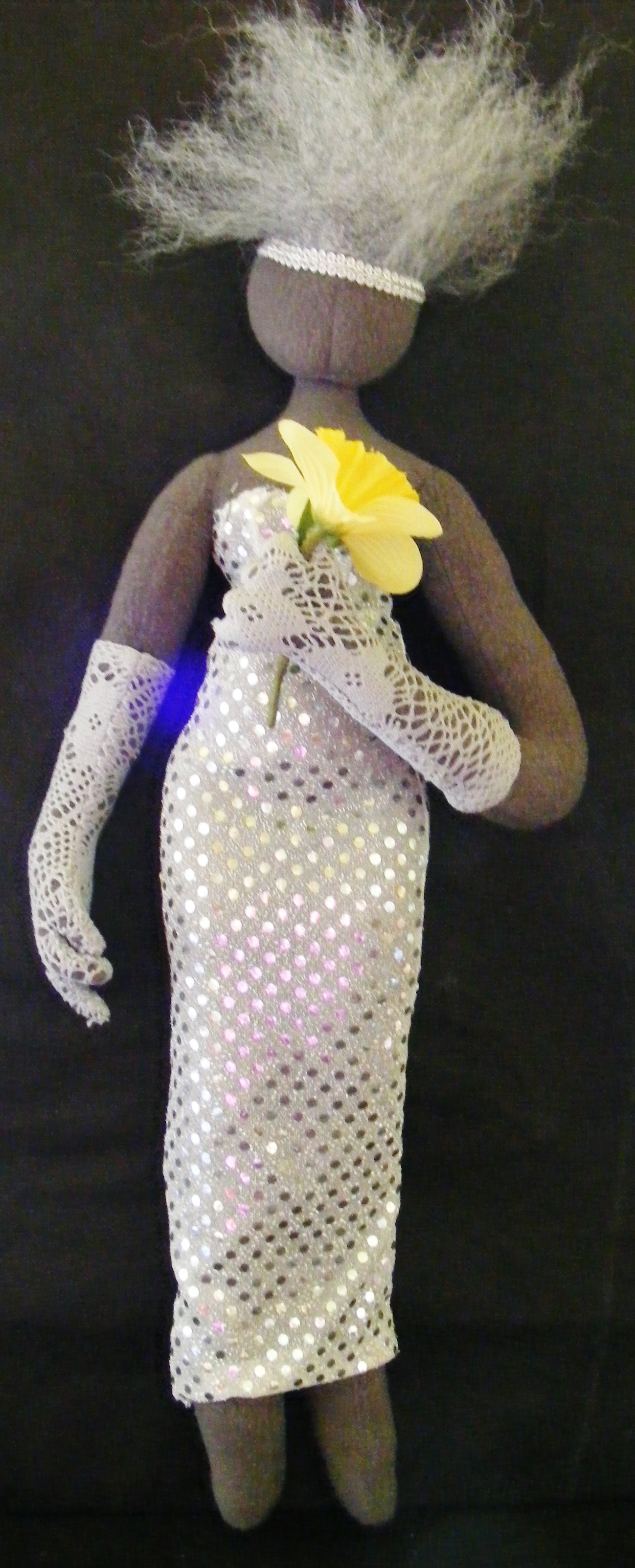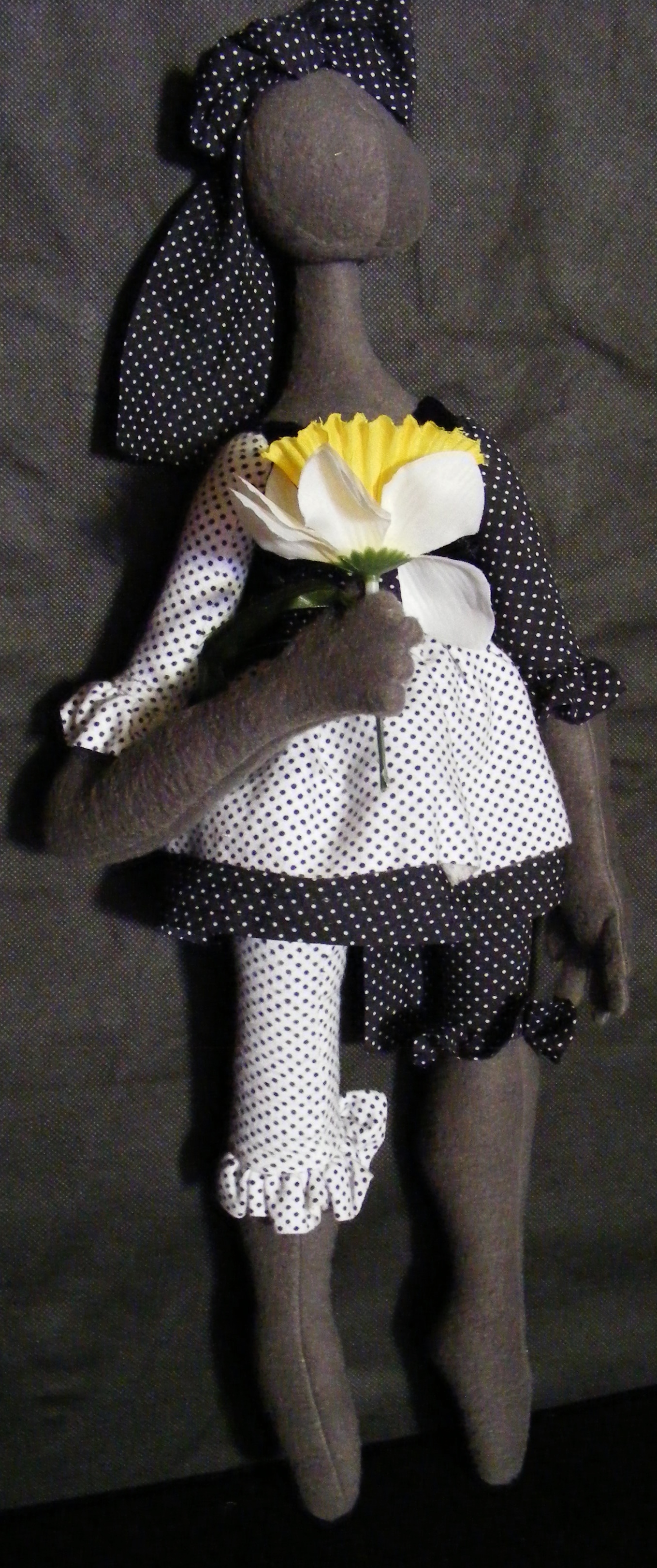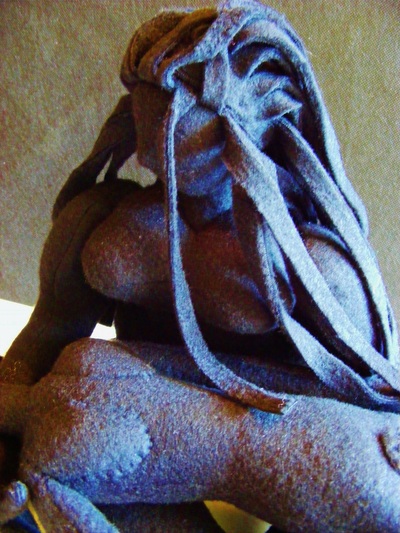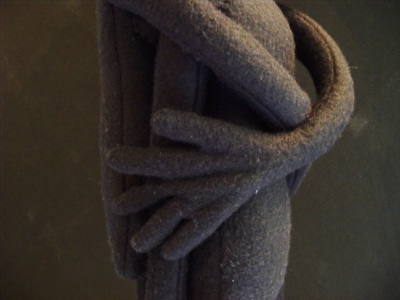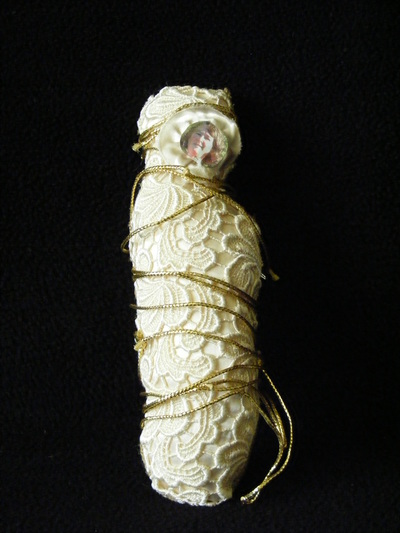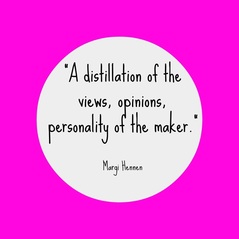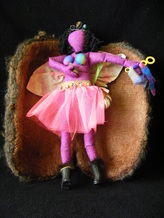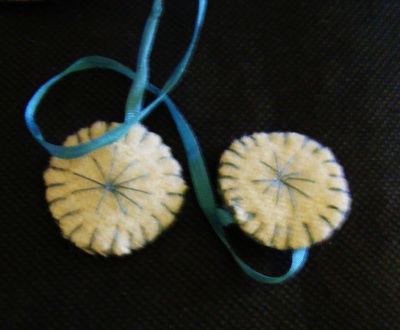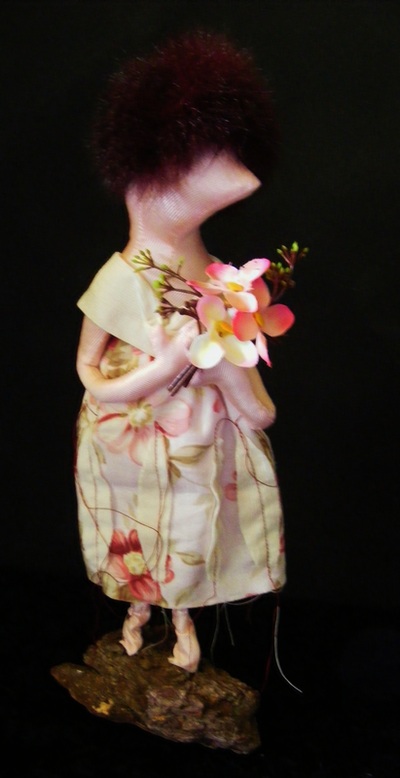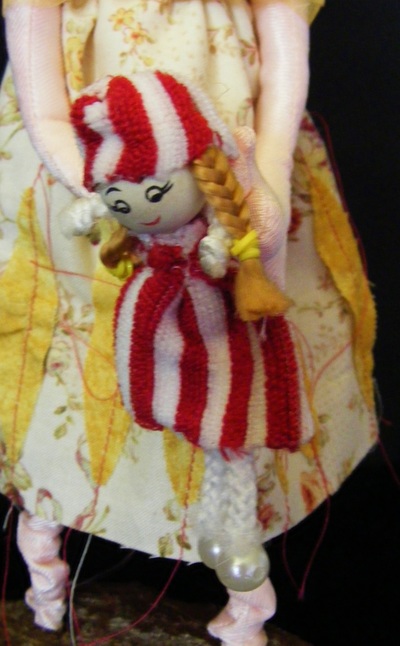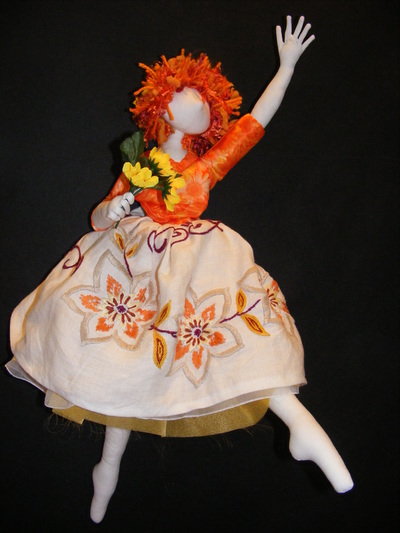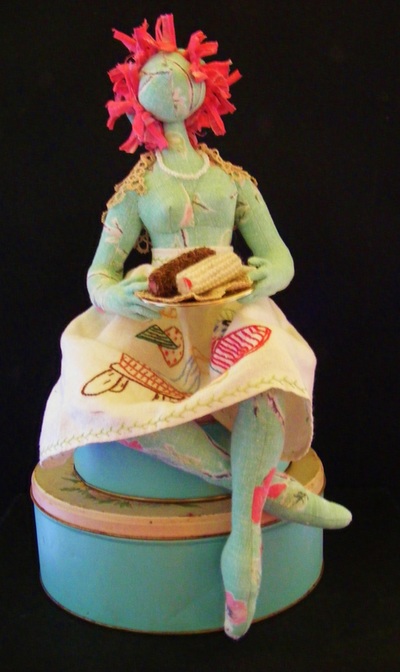HEARTFELT DOLLS: SEEKING A DEFINITION
I have been making dolls for several years but only recently have I challenged myself with the question:
"What is a doll?"
Wikipedia defines a doll as
'a model of a human being';
'a toy for children';
an artifact used in magic and religious rituals and festivals;
and an item of nostalgia.'
Susanna Oroyan suggests "...a doll is just another way we appreciate the infinite variety of our fellow human beings."
On another page, Wikipedia further defines an art doll as 'objects of art'.
Certainly these definitions describe much of the art I create.
"What is a doll?"
Wikipedia defines a doll as
'a model of a human being';
'a toy for children';
an artifact used in magic and religious rituals and festivals;
and an item of nostalgia.'
Susanna Oroyan suggests "...a doll is just another way we appreciate the infinite variety of our fellow human beings."
On another page, Wikipedia further defines an art doll as 'objects of art'.
Certainly these definitions describe much of the art I create.
But I think there is more.
We need to explore how these representations of the human form have evolved.
There are elemental forms made from found objects -
stone, wood, such as twigs bound together,
plants, such as corn husk dolls and tied grasses,
clay, wax, bone, and food, such as wizened carved apple heads.
Why were these elemental forms made?
Who were they made by and who were they made for?
We need to explore how these representations of the human form have evolved.
There are elemental forms made from found objects -
stone, wood, such as twigs bound together,
plants, such as corn husk dolls and tied grasses,
clay, wax, bone, and food, such as wizened carved apple heads.
Why were these elemental forms made?
Who were they made by and who were they made for?
Primitive dolls can be constructed from yarn, as in a wrapped doll,
or cloth, as in a tied handkerchief doll.
There is no stitching.
Skeletal dolls are fashioned from wire or pipe cleaners.
Later they can be wrapped to give a fuller figure.
or cloth, as in a tied handkerchief doll.
There is no stitching.
Skeletal dolls are fashioned from wire or pipe cleaners.
Later they can be wrapped to give a fuller figure.
Dolls as a toy for children have been around for millennia.
Examples have been found in Greece from about 100AD.
Later they were developed in Germany as a model for the latest fashions -
perhaps more to be admired than played with.
Examples have been found in Greece from about 100AD.
Later they were developed in Germany as a model for the latest fashions -
perhaps more to be admired than played with.
With the development of mass manufacture and mass marketing,
dolls were created for, and targeted at children,
"an idealised image of a fashionable woman or a beautiful child", suggests Akira Blount.
I agree with Pamela Hastings when she suggests that this mass production and distribution
were a very clever way to imprint cultural roles, such as mother, wife, warrior,
and to reinforce sexual stereotypes.
But now individuals can use the doll form to examine these stereotypes;
act out sexual roles;
and examine their source and assumptions.
dolls were created for, and targeted at children,
"an idealised image of a fashionable woman or a beautiful child", suggests Akira Blount.
I agree with Pamela Hastings when she suggests that this mass production and distribution
were a very clever way to imprint cultural roles, such as mother, wife, warrior,
and to reinforce sexual stereotypes.
But now individuals can use the doll form to examine these stereotypes;
act out sexual roles;
and examine their source and assumptions.
Pamela Hastings is a strong advocate of the healing and transformative power
of creating a simple physical representation of a traumatic event or person.
When we give ourselves permission to do this,
"we can see how much stronger we are than that piece of the past".
These representations can be as simple as a shape constructed from lint,
to forms made from several intricate pieces.
There is no right nor wrong way to make this type of doll.
There is no formula.
Each creation is a reflection of the needs of its creator.
of creating a simple physical representation of a traumatic event or person.
When we give ourselves permission to do this,
"we can see how much stronger we are than that piece of the past".
These representations can be as simple as a shape constructed from lint,
to forms made from several intricate pieces.
There is no right nor wrong way to make this type of doll.
There is no formula.
Each creation is a reflection of the needs of its creator.
Is there anything a doll must have?
Margi Hennen says,
"It may have two legs, or three, or more.
It probably has a body of some sort (which could be a carrot).
It may have arms - or not - or a tail, or wings."
I am not sure what is integral to a doll.
Perhaps it is more about how we relate to this representation
than what it looks like;
more about the reason for its creation
than about which rules it conforms to;
more about how it speaks to an aspect of the human condition
than about methods of construction.
Margi Hennen says,
"It may have two legs, or three, or more.
It probably has a body of some sort (which could be a carrot).
It may have arms - or not - or a tail, or wings."
I am not sure what is integral to a doll.
Perhaps it is more about how we relate to this representation
than what it looks like;
more about the reason for its creation
than about which rules it conforms to;
more about how it speaks to an aspect of the human condition
than about methods of construction.
Does a doll have to have a 'back story'
or should it have an intrinsic worth, obvious to all?
Is the personality of a doll fixed or flexible -
taking on different persona as it journeys
from conception and design to manufacture
and on to ownership by one or by many?
Are dolls the 'holder of stories';
guardians of truth,
guides through life,
sentinels?
As we consider these questions and others,
does it affect how we define a doll?
or should it have an intrinsic worth, obvious to all?
Is the personality of a doll fixed or flexible -
taking on different persona as it journeys
from conception and design to manufacture
and on to ownership by one or by many?
Are dolls the 'holder of stories';
guardians of truth,
guides through life,
sentinels?
As we consider these questions and others,
does it affect how we define a doll?
Real life is a rich source of inspiration.
Dolls are a means of conveying and expressing our reactions to our daily life -
inquiry, grief, joy.
Dolls can record the passages of our life -
from infancy through childhood and adolescence to adulthood and death.
Dolls use the human figure to record these events.
Whatever their shape or quality,
they are an immediate and very tactile means of saying
"You are not alone."
Dolls share our past, accompany us in the present, and embolden us to face the future.
Dolls are a means of conveying and expressing our reactions to our daily life -
inquiry, grief, joy.
Dolls can record the passages of our life -
from infancy through childhood and adolescence to adulthood and death.
Dolls use the human figure to record these events.
Whatever their shape or quality,
they are an immediate and very tactile means of saying
"You are not alone."
Dolls share our past, accompany us in the present, and embolden us to face the future.
Different representations of the human figure serve us in many ways.
A soft felt body devoid of limbs can act as comforter and companion.
Tiny wrapped peg dolls in an organza bag can act as prayer guides and stress relievers.
Simple rag dolls dressed in familiar items such as pyjamas or dressing gown
can serve as tactile photographs, instantly transporting us down memory lane.
An arm-less doll with an angry countenance can dissipate anger.
A naked male doll can invite us to pause and question gender stereotypes.
A beautiful, meticulously crafted doll can cause us to dwell for a moment in wonder and awe.
A soft felt body devoid of limbs can act as comforter and companion.
Tiny wrapped peg dolls in an organza bag can act as prayer guides and stress relievers.
Simple rag dolls dressed in familiar items such as pyjamas or dressing gown
can serve as tactile photographs, instantly transporting us down memory lane.
An arm-less doll with an angry countenance can dissipate anger.
A naked male doll can invite us to pause and question gender stereotypes.
A beautiful, meticulously crafted doll can cause us to dwell for a moment in wonder and awe.
|
When we think of dolls as mediators,
are we considering them to be talismans or spirit guides, surrogates or scapegoats, conduits or vessels? But why use a representation of the human form? What is it that separates a figure from a rock or a cross or a piece of cloth? How can a figure be imbued with such power that people are wounded (voodoo dolls) or people are healed (holy statues) through its use? Is it what the viewer brings to the doll that enlivens and empowers it? |
|
I love this definition by elinor peace bailey.
Dolls certainly do bring materials and textiles to life. The doll maker transforms a 2D material into a 3D form, which animates and gives a voice to the form. Creating a doll lets the pattern and/or nature of the fabric speak in a new way; they now reflect my voice as the doll maker. The personality and spirit of all those involved in the manufacture of the materials is embedded in the new doll form: consider cotton growers and millers, screen-printers, designers, graphic artists, weavers and knitters, merchandisers ... |
|
We bring to a piece of art many conscious and sub-conscious
conceptions and pre-conceptions. These determine how we define aesthetic appeal. They are shaped by our enculturation and our education; our temperament and our sensibilities; our need or desire for social acceptance or social standing; and our preferences for realistic or conceptual art. Do we want to be pushed out of our comfort zones or do we want to reinforce the status quo? Do we rate creativity and lateral thinking as valuable traits in our society? |
What's in a name?
Doll.
Toy.
Soft sculpture.
Figure sculpture.
Talisman.
What's in a title?
Fine art.
Abstract figure sculpture.
Impressionistic figure sculpture.
Commercial toy design.
Dimensional illustration.
Fashion mannequin.
Play doll.
Craft.
What's in a doll?
Projection of the artist.
Artist's emotional construct.
Technical skills and abilities.
Imagination.
Communication of an idea.
Transformation of an idea.
Provocation.
Doll.
Toy.
Soft sculpture.
Figure sculpture.
Talisman.
What's in a title?
Fine art.
Abstract figure sculpture.
Impressionistic figure sculpture.
Commercial toy design.
Dimensional illustration.
Fashion mannequin.
Play doll.
Craft.
What's in a doll?
Projection of the artist.
Artist's emotional construct.
Technical skills and abilities.
Imagination.
Communication of an idea.
Transformation of an idea.
Provocation.
|
Yulia Ustonova makes a distinction between dolls, which she defines as being clad, and soft sculpture.
Certainly without clothing, the doll form can look more sculptural; become timeless; captures the essence of what the artist is trying to depict. The role of posture and expression become key elements, as does the relationship to others works of art and the viewer. However, art dolls which are dressed, can reflect a time period; reflect a design aesthetic; or become an objet d'art (a small decorative or artistic object, typically when regarded as a collectible item) Their voice, their statement, are just as valid. |
What should a doll demand of its viewer?
When is it an art doll and when is it soft sculpture?
Are some things acceptable in a soft sculpture but not in a doll?
Should a doll have a purpose?
Who decides?
When is it an art doll and when is it soft sculpture?
Are some things acceptable in a soft sculpture but not in a doll?
Should a doll have a purpose?
Who decides?
Leslie Clark in Fibrearts magazine, Sep/Oct 2006 writes,
"Whether described as dolls or as mixed-media figurative sculptures,
(doll) artists open up a dialogue between the artist and the viewer.
The doll speaks to us about ourselves and our condition as humans;
it shows us things we never knew or have ignored or forgotten,
such as how it feels to be a child,
or our connection with nature.
Dolls give us back to ourselves;
we are more alive in their presence.
No wonder we cherish them."
"Whether described as dolls or as mixed-media figurative sculptures,
(doll) artists open up a dialogue between the artist and the viewer.
The doll speaks to us about ourselves and our condition as humans;
it shows us things we never knew or have ignored or forgotten,
such as how it feels to be a child,
or our connection with nature.
Dolls give us back to ourselves;
we are more alive in their presence.
No wonder we cherish them."
I am no closer to a definition of a doll than I was at the beginning ... but the journey will continue:-)
No one definition fits all.
Most dolls are related to the human figure in some way - but not all.
Some are conceptual. Others are realistic.
Some could be considered art. Others are a part of healing or ritual. Or maybe both art and healing.
Some dolls are the outstanding product of a meticulous process and outstanding craftsmanship.
Others are the intuitive by-product of a transformative and healing process.
Some dolls are reliant on a back story. Others stand alone on their own merit - an objet d'art.
Some dolls are defined by the products used to create them -
consider plastic or porcelain or calico or felt.
Some dolls are whipped up in a moment. Others take months, even years, to create.
Some are life-like. Others are the product of our imaginations.
Many dolls are mass produced. Many are unique individuals.
Some use traditional methods and patterns. Others use elemental or found materials.
Many engender nostalgia. Some create fear. Others soothe and comfort.
Some dolls are not dolls at all - they are soft sculptures.
Sigh ....
we will have to let them reveal their true nature:-)
No one definition fits all.
Most dolls are related to the human figure in some way - but not all.
Some are conceptual. Others are realistic.
Some could be considered art. Others are a part of healing or ritual. Or maybe both art and healing.
Some dolls are the outstanding product of a meticulous process and outstanding craftsmanship.
Others are the intuitive by-product of a transformative and healing process.
Some dolls are reliant on a back story. Others stand alone on their own merit - an objet d'art.
Some dolls are defined by the products used to create them -
consider plastic or porcelain or calico or felt.
Some dolls are whipped up in a moment. Others take months, even years, to create.
Some are life-like. Others are the product of our imaginations.
Many dolls are mass produced. Many are unique individuals.
Some use traditional methods and patterns. Others use elemental or found materials.
Many engender nostalgia. Some create fear. Others soothe and comfort.
Some dolls are not dolls at all - they are soft sculptures.
Sigh ....
we will have to let them reveal their true nature:-)
REFERENCES
Clark, Leslie, The Art of the Doll, in Fibrearts, Sep/Oct 2006, Interweave Press, Colorado
Funk, Ruth E. Dolls Etcetera, 2012, Panache Partners LLC, Plano, Texas
Hastings, Pamela, Doll Making as a Transformative Process, 2003, Self-published
Oroyan, Susanna, Anatomy of a Doll, 1997, California, C&T Publishing
Shrader, Valerie Van Arsdale, (Senior Editor) 500 Handmade Dolls, 2007, Asheville, Lark Books
Yulia Ustinova http://zoneonearts.com.au/yulia-ustinova/
Margi Hennen http://margihennen1.weebly.com/margi.html
Barb Kobe http://www.barbkobe.com/
Sayraphim Lothian https://www.facebook.com/SayraphimLothian
Reina Mia Brill http://www.reinamiabrill.com/
Clark, Leslie, The Art of the Doll, in Fibrearts, Sep/Oct 2006, Interweave Press, Colorado
Funk, Ruth E. Dolls Etcetera, 2012, Panache Partners LLC, Plano, Texas
Hastings, Pamela, Doll Making as a Transformative Process, 2003, Self-published
Oroyan, Susanna, Anatomy of a Doll, 1997, California, C&T Publishing
Shrader, Valerie Van Arsdale, (Senior Editor) 500 Handmade Dolls, 2007, Asheville, Lark Books
Yulia Ustinova http://zoneonearts.com.au/yulia-ustinova/
Margi Hennen http://margihennen1.weebly.com/margi.html
Barb Kobe http://www.barbkobe.com/
Sayraphim Lothian https://www.facebook.com/SayraphimLothian
Reina Mia Brill http://www.reinamiabrill.com/








